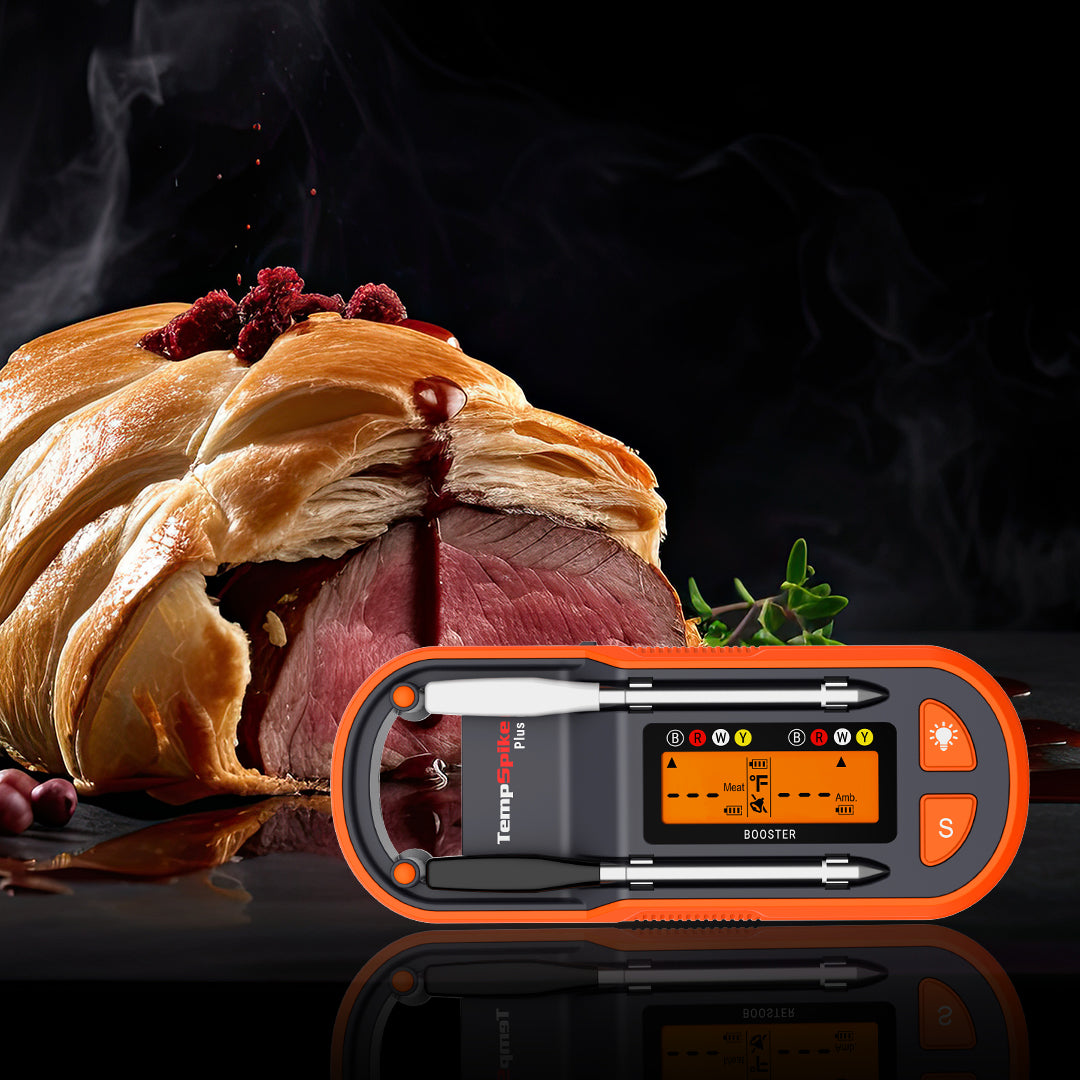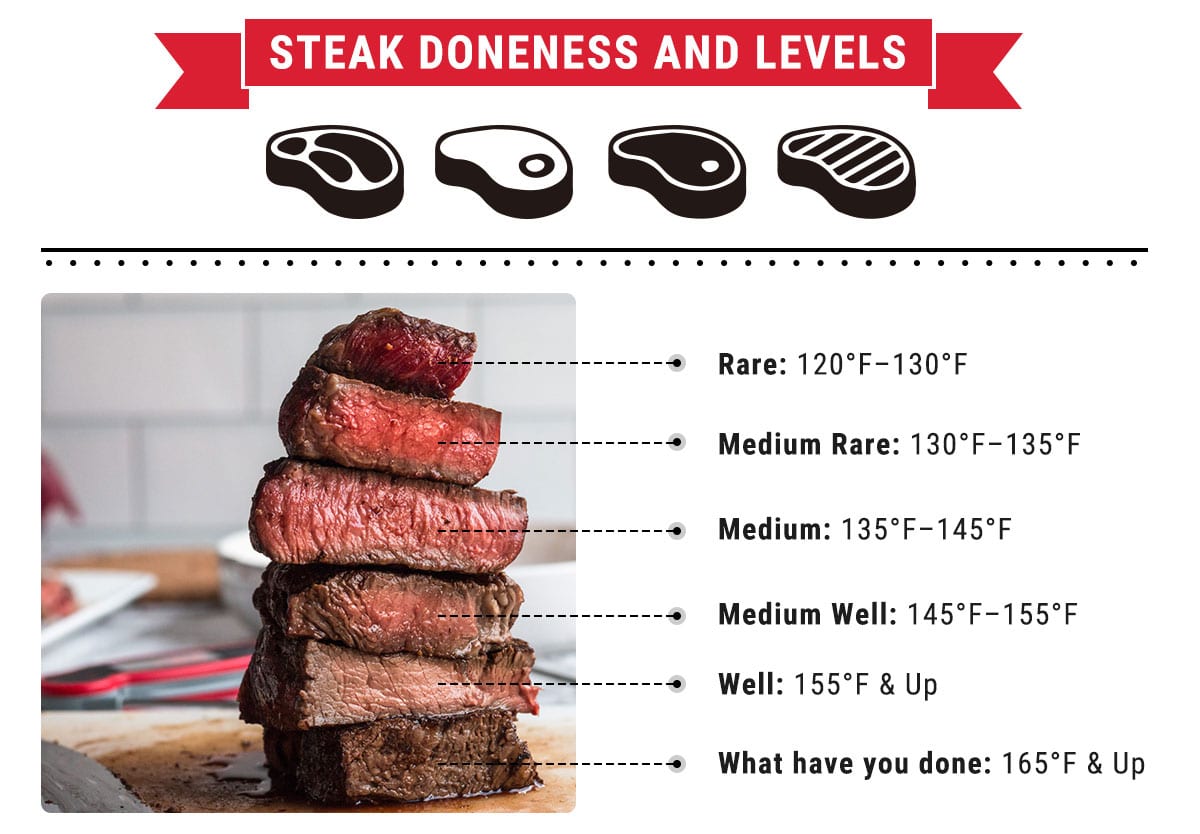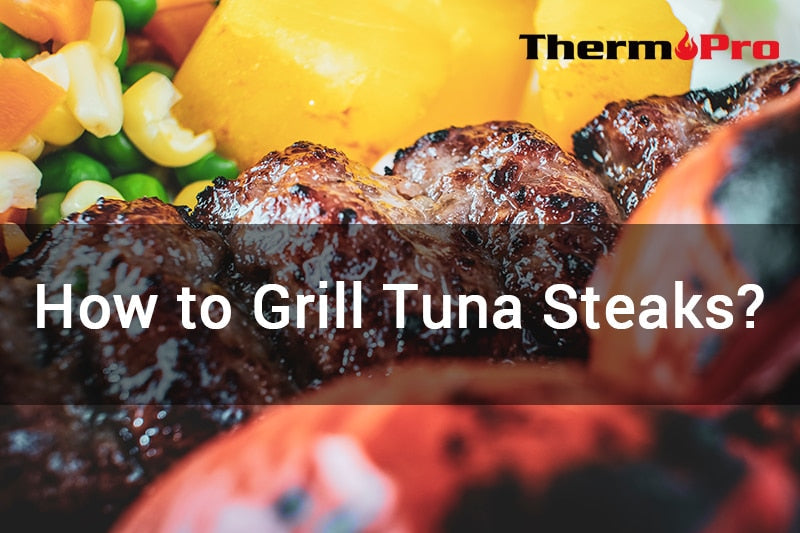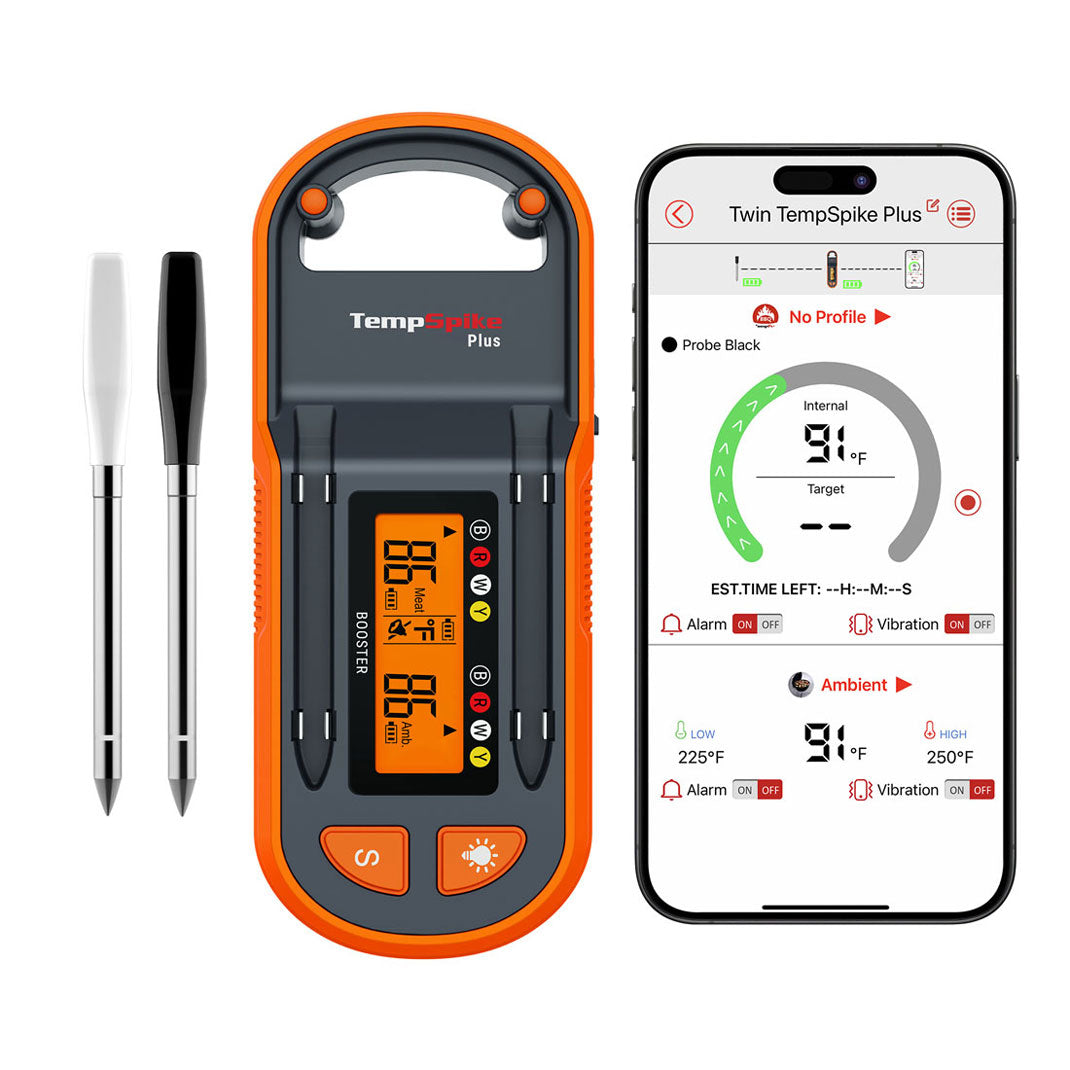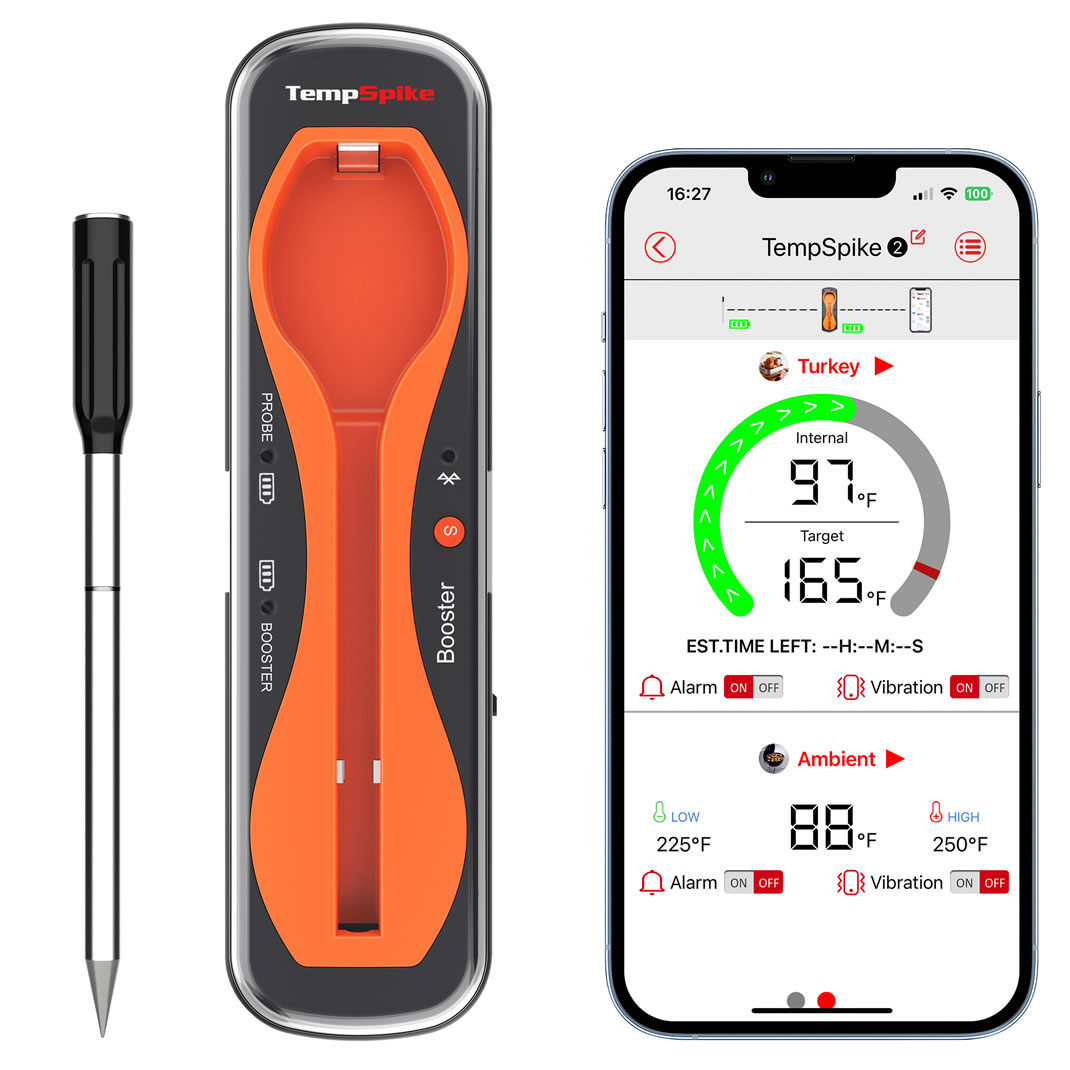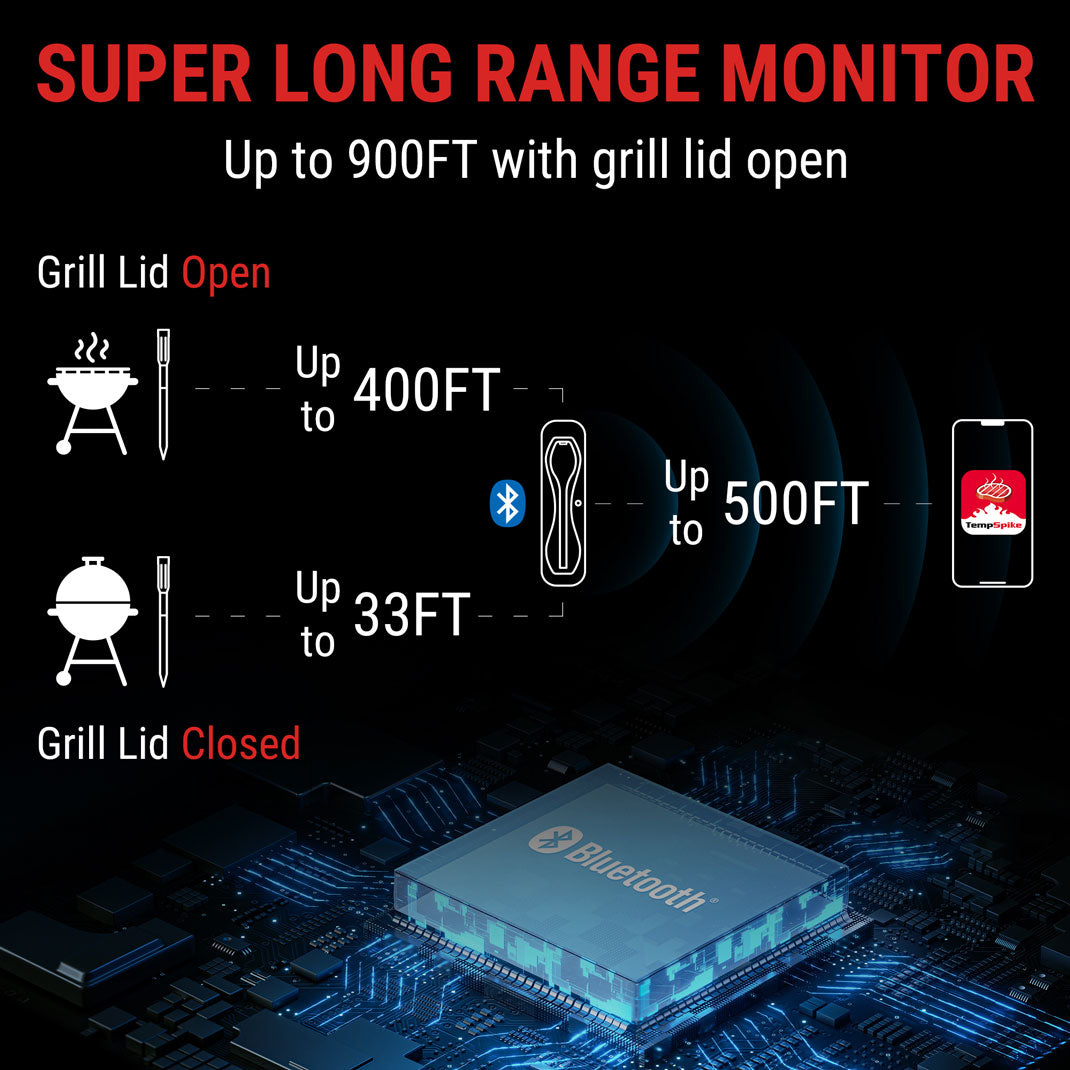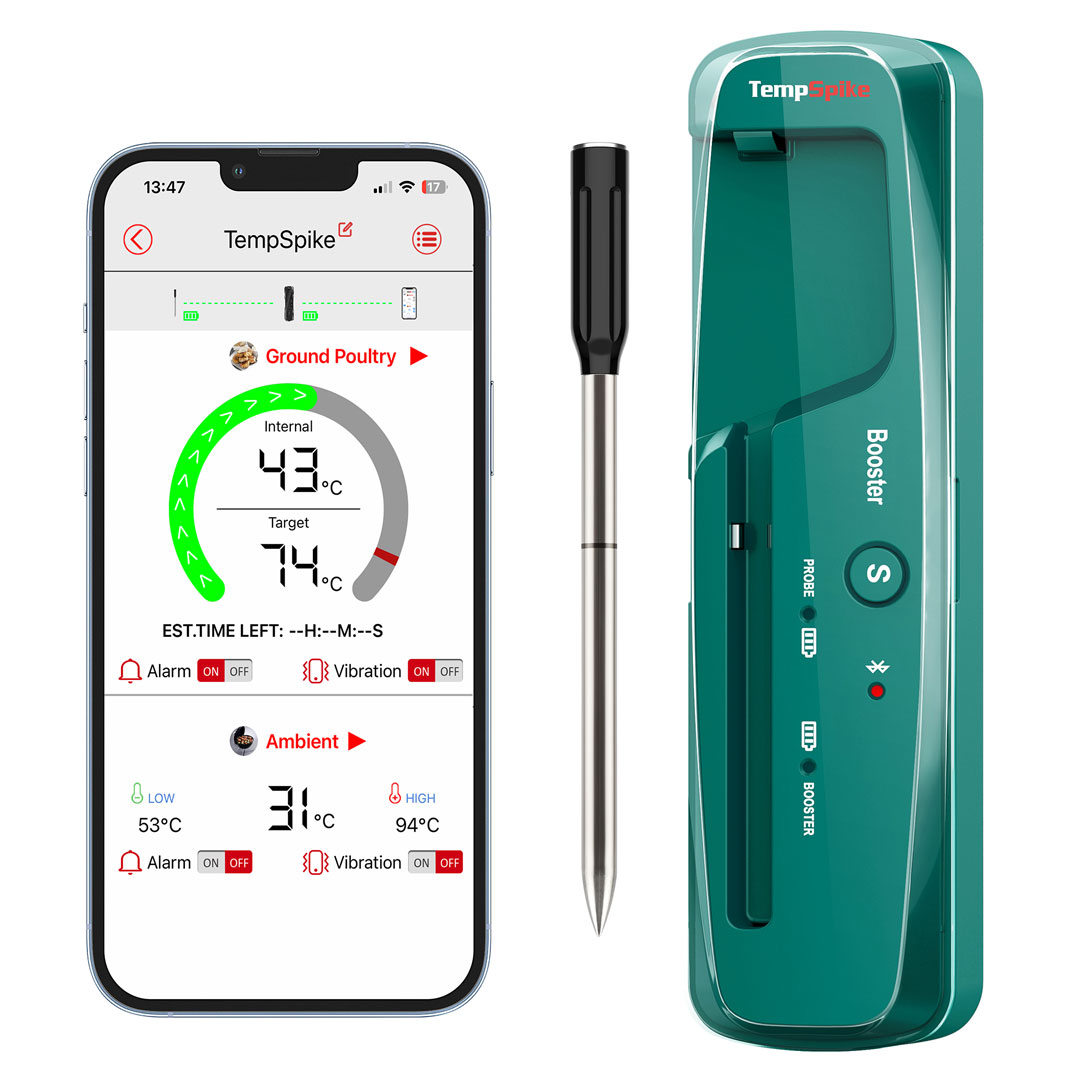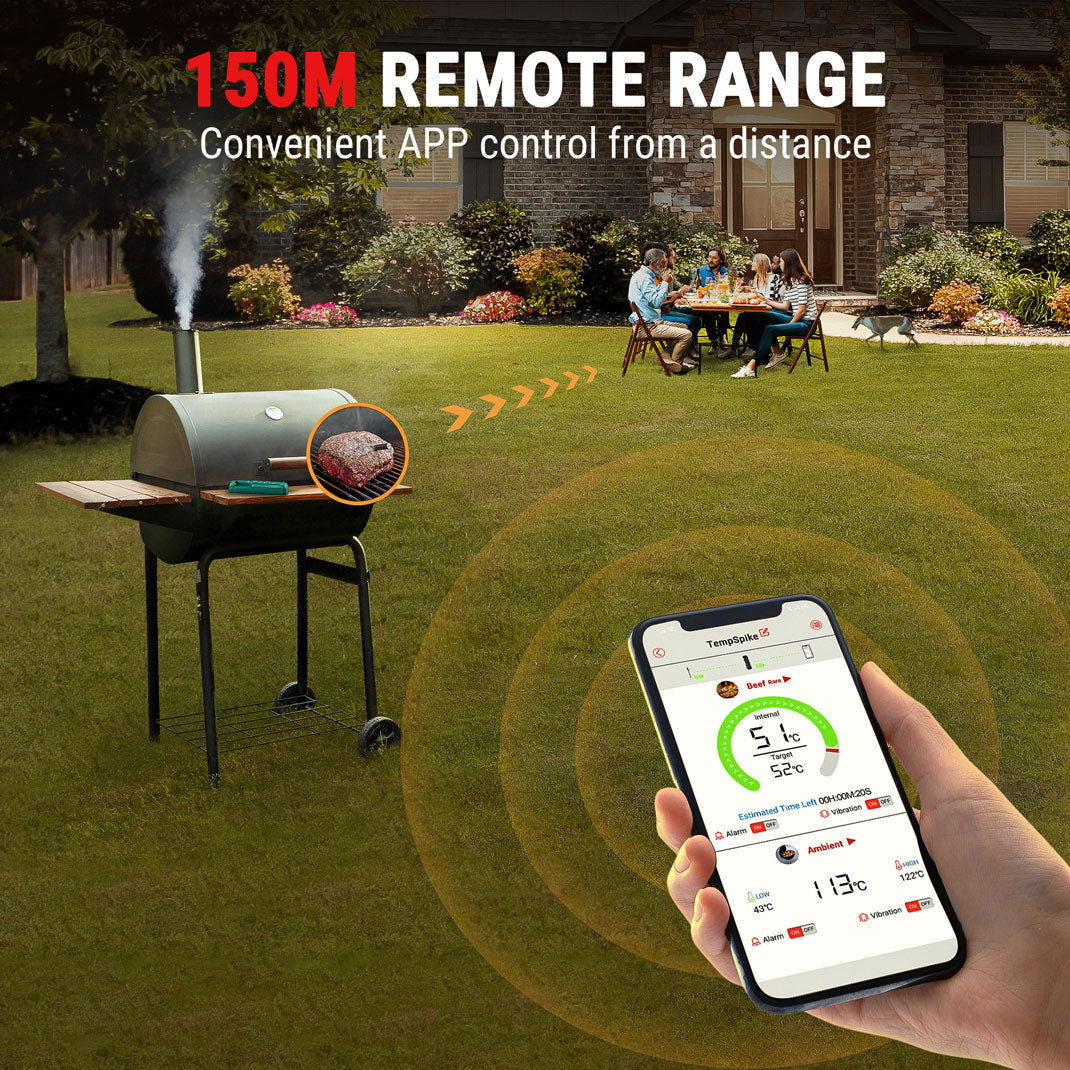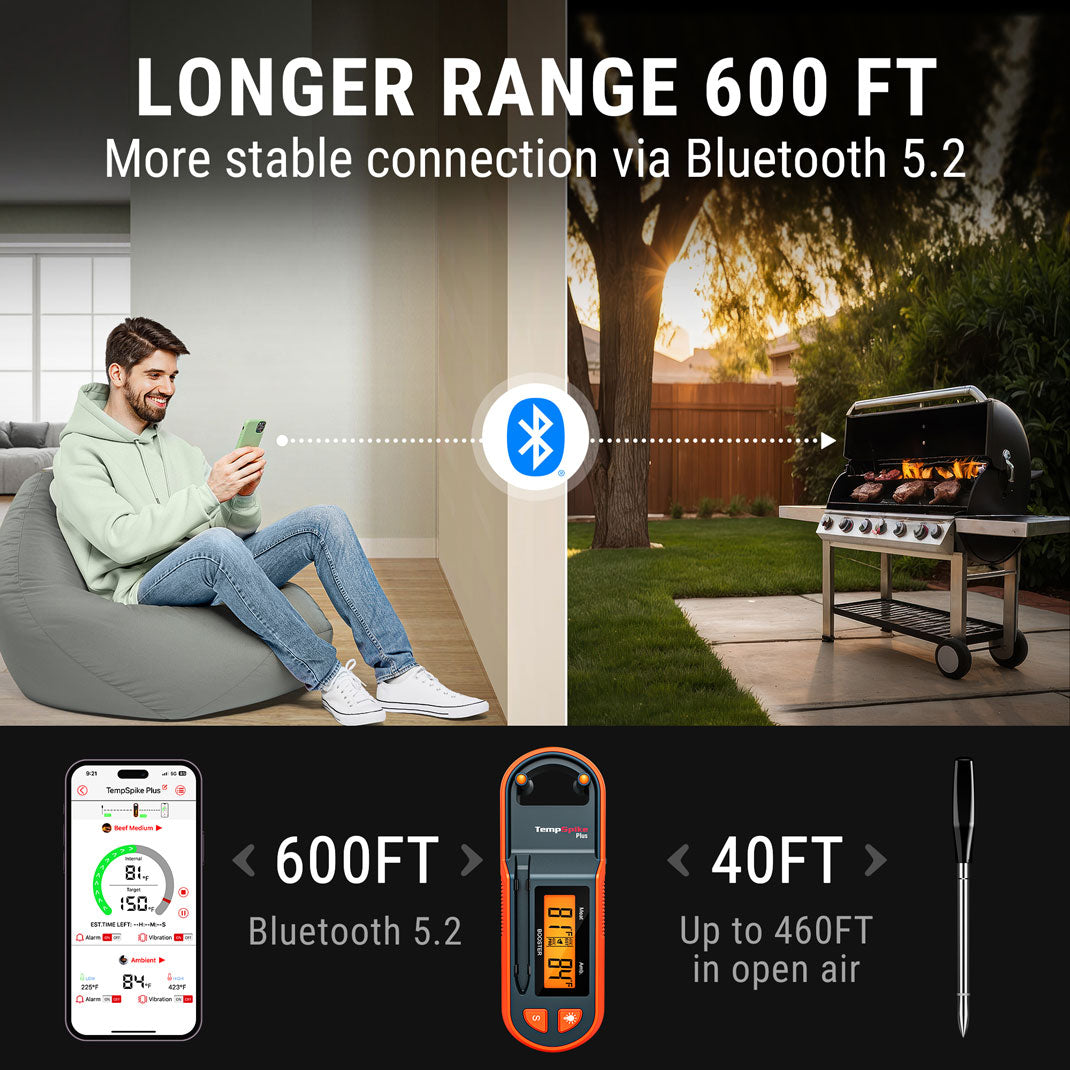Are you itching to start cooking your summer grilling ideas? We get it. But before you start cooking, spend a little time inspecting and cleaning your grill. It’s important to do this at least once a year. We’ve also included a primer on how to prepare, season, and cook the most popular grilled foods with the grill food thermometers.
7 Hacks for Preparing Summer Grilling/BBQ
Top-to-Bottom Seasonal Inspection
Gas grill: Begin your seasonal inspection by checking for signs of rust on all parts of your grill. Then check for evidence of bugs and other pests that may have taken up residence in your garage or storage shed. If you left it outside but covered since last fall, some critters may have moved in. Next check the fuel lines for leaks. First look for cracks in the lines, then brush lines with soapy water. Turn the gas on and check the lines and connections for bubbles, which pinpoint any leaks. Tighten the connections if they leak or replace the lines if they show bubbles.
Charcoal grill: Check for holes in the metal caused by rust that could let hot coals drop out onto the ground and create a fire hazard. Then make sure the metal vents are operable. Grease them with a household spray-on lubricant to keep them easy to open and close.
Cleaning Grill Interior and Exterior
Interior: loosely cover burners with aluminum foil to protect them from the cleaner; then remove caked-on or thick debris with a grill brush. Remove the greased pan and cooking grates. Spray the interior with a commercial grill cleaner and degreaser. After waiting for the appropriate length of time recommended by the manufacturer, scrub with a grill brush to remove debris. Remove aluminum foil and clean out fallen debris. Wipe all interior surfaces with damp clean cloth or sponge. Then thoroughly clean drip pans on the newspaper-covered ground using the grill cleaner and wipe clean with your damp cloth.
Exterior: spray exterior with a commercial grill cleaner and degreaser. Wait a few minutes then wipe with a damp sponge or cloth. If it is extra dirty, let sit a few extra minutes before wiping off.
Charcoal grill: First dump out ashes and charcoal debris. Then wash inside and outside with an old rag. Hose off the entire grill, inside and out, and let dry thoroughly.

Clean Out Tubes and Burners
Use a toothpick, paper clip or pipe cleaner to remove clogs in fuel lines or connections. A word of caution: turn off the fuel before doing this.
Clean and Oil the Cooking Grate
Gas grill: Heat on high temperature until the debris on the grates turns to white-gray ash and then run a half onion over the grill using tongs to remove residue. You can also use green corn husks to wipe off the cooking grate. Another method is to spray a solution of half vinegar and half water on interior surfaces, close the lid and wait one hour. The residue can then be easily removed with a cloth and/or grill brush.
Charcoal grill: Scrape debris from cooking and fire grates using a stiff wire brush. Wash aluminum grates with dish detergent, water, and an old rag. Clean stainless steel grates with a grill grate cleaner by putting the grates in a trash bag. Spray the grates, seal bag, and let sit overnight. The next day, remove grates from bag, place on the newspaper-covered ground, and scrub with grill or wire brush. Rinse well with a hose.
Measure Your Fuel Level
To determine how much fuel you have left, simply pour warm water on the side of the tank. The water will feel cool where fuel is and warm at the top where it is empty. This is the easiest easy to determine how much fuel you have left.
Turn On and Repeat the Heat
Check the color of the flame: yellow flames do not heat up as effectively as blue flames with yellow tips. Yellow flames may be caused by low pressure from the tank. To troubleshoot, turn everything off, disconnect, and reboot. Turn the gas on slowly. If there is no change in the flame color, try replacing the burner ports as they may have gotten wider over time and become less effective.
Other Maintenance
Inspect your grill tools and accessories. Replace them if they are bent, rusted or the handles are loose. Fire up the grill with the lid closed to burn off any residue from the cleaning solutions. Let it burn for about 30 minutes to be sure all the residue is burned off before cooking in it.
Cooking Tips for Grilling in Summer
Direct vs. Indirect Heat
The direct and indirect grill is popular to use when grilling! Direct heat is when you cook directly over the heat source. Use this method when the food you’re cooking takes less than 20 minutes to finish, such as boneless, skinless chicken breasts, hot dogs, burgers, cooked sausage, shrimp, or sliced vegetables.
Indirect heat is when there is no heat directly under the food and heat on one or both sides. This is the best method if the food you’re cooking takes more than 20 minutes to cook, like chicken pieces on the bone, whole chickens, turkeys, fresh sausages, steaks or roasts. Also, use this method to grill fish fillets to avoid overcooking them.
The best of both methods is to create the coveted grill marks over direct heat for items requiring indirect heat, then finish over indirect heat. Or you can reverse sear them by cooking over indirect heat first, then finishing over direct heat to get the grill marks.

Season Simply Using the Trilogy
The trilogy of seasoning for summer bbq food is salt, pepper, and olive oil. You’ll get the best results and your food will not stick by putting oil on the food, not on the grates. If you oil the grates, they will turn tacky when heated and encourage the food to stick. Add salt just before putting meat on the grill or it will draw the juices out and make it dry when cooked. Add the trilogy seasonings sparingly, you can always add more. The best pepper for grilling is coarsely ground from a pepper mill, which will not taste as hot as peppercorns ground into dust.
Prepping the Favorites
When preparing for your summer bbq party, cut veggies into ½ inch-thick slices and in sizes that will not fall through the grates. Vegetables that are best for direct heat include asparagus, bell peppers, corn still in the husks, eggplant, onions, scallions, and zucchini. Fruits that work best with direct heat include bananas still in their peels, melon, and large strawberries.
Produce that cooks best over indirect heat include whole, firm vegetables like artichokes, carrots, garlic heads, portobello along with other large mushrooms, or potatoes. These vegetables should be prepped with the trilogy. Also cook whole apples, apricots, peaches, pears, plums, or a watermelon over indirect heat. You’ll get stellar results if you first put these vegetables or fruits over direct heat to make grill marks and then move them to indirect heat to cook thoroughly.
Use a custom beef blend for your burgers. Options include aged rib-eye trimmings, chuck, hanger steak, short rib, or sirloin. Do not add fillers like bread crumbs or eggs, they’ll dilute the meaty flavor and may stick to the grate. Use a light touch when forming burgers; to keep them tender, do not work the meat too much. Put your thumb in the center of each patty and make an indent. This will keep them from developing a “mound” in the center of the patty as they cook. Lightly season with salt and pepper just before cooking.
To cook fish, use indirect heat for the best results. Cook fish on a cedar plank to keep it from sticking to the grate. Another method is to remove the skin from the fish, put it scale side down on the grill, and then put your fillets on top of the skin. If the fillets stick to the skin, gently separate them with a heat-proof spatula placed between the skin and flesh. Serve the crispy skin alongside the fish if you want. Avoid using foil for fish because it tends to stick to it.
Fish that should be cooked over direct heat includes steaks like swordfish or tuna, as well as seafood cooked in the shell.
Upgrade Your Grill Tools with a Meat Thermometer
When you’re planning your summer grill meals, remember to upgrade your tool collection with a ThermoPro meat thermometer. This is an essential tool to make sure your grilled meats are cooked to the exact degree of doneness that your guest’s request or food safety requires. Available in wireless models with or without a probe, this is the best investment you will ever make for your summer bbq parties.
Cleaning
Gas grills: Heat the grill on high for about 10 minutes after you’re done cooking then run heavy-duty aluminum foil over the grates with tongs while they are still hot. This will give you a head start the next time you grill. For heavy residue, let the grill run for a half-hour or more until the grates are white-gray ash and it will be easier to remove grill residue.
Charcoal grills: Add a few more briquettes, close the lid and let it burn until the white-gray ash forms on the grates. Then you can easily remove the residue with a grill brush.
Here we’ve presented both how to prepare your grill for summer grill meals and the basics of preparing and cooking various foods on your grill. We recommend that you inspect and deep clean your grill at least once per season. While it isn’t necessary to clean the grill grate immediately after you use it, we find that it is easier to keep the grill grate clean this way.
We cannot stress enough how much a ThermoPro meat thermometer will help you when cooking summer grilled meals. If you want to always serve grilled meats that are juicy and perfectly cooked, the easiest way to do this is to use a ThermoPro meat thermometer. We think you’ll agree it is the best accessory to have for summer bbq food.






 288 Comments
288 Comments
